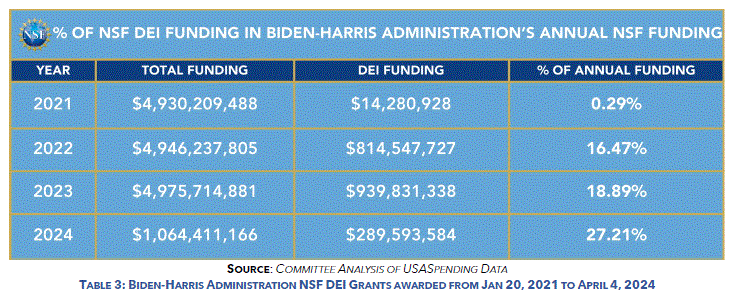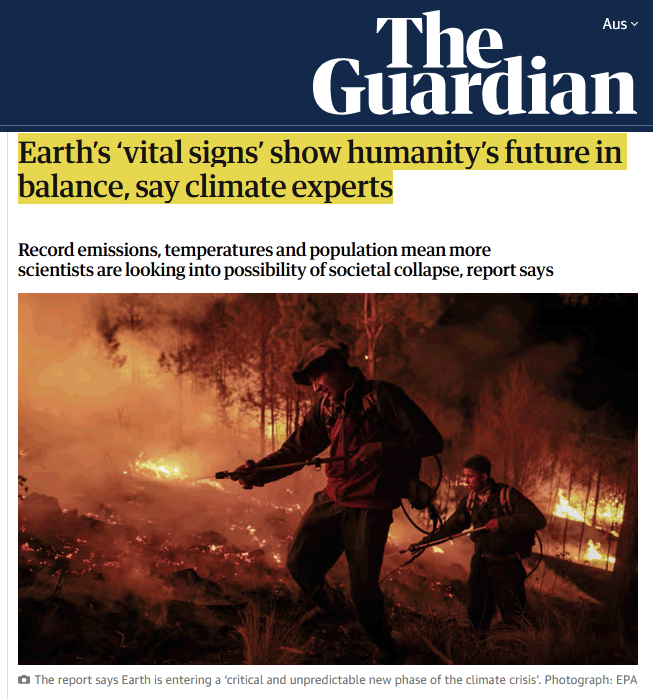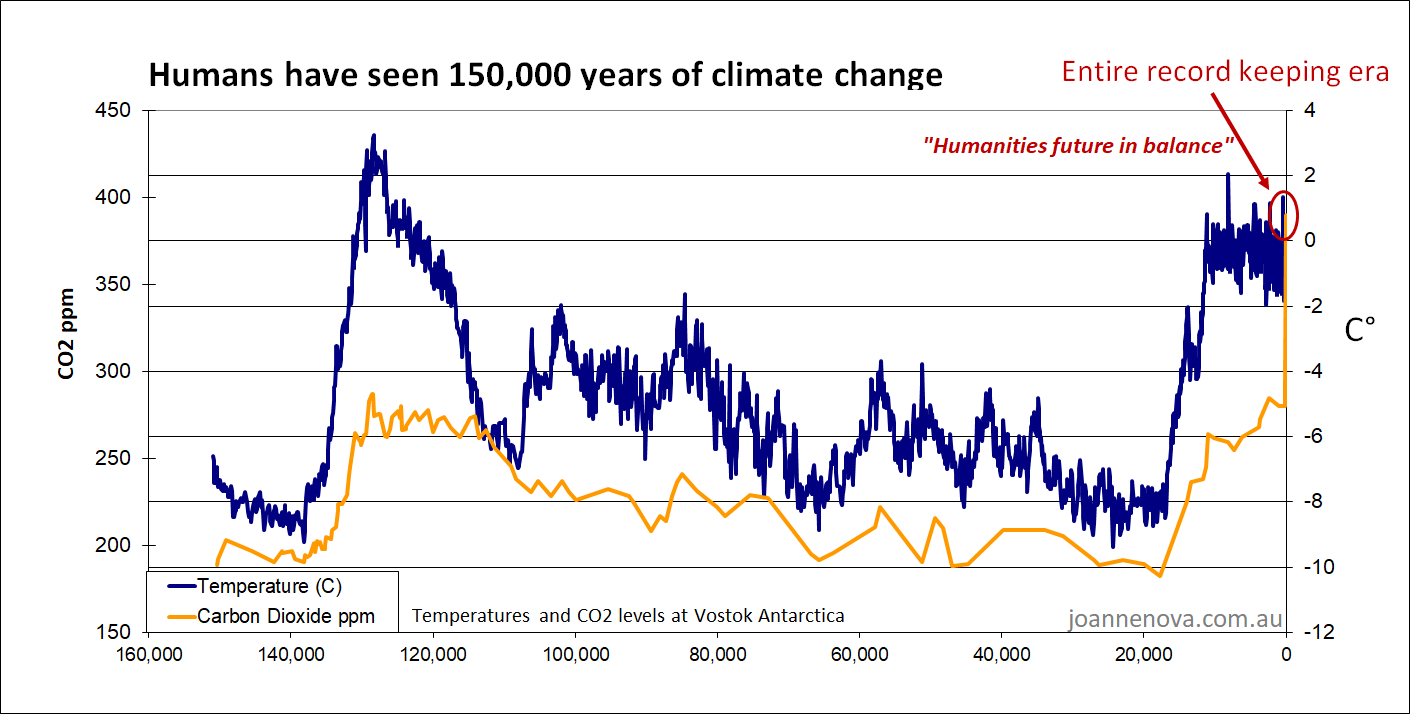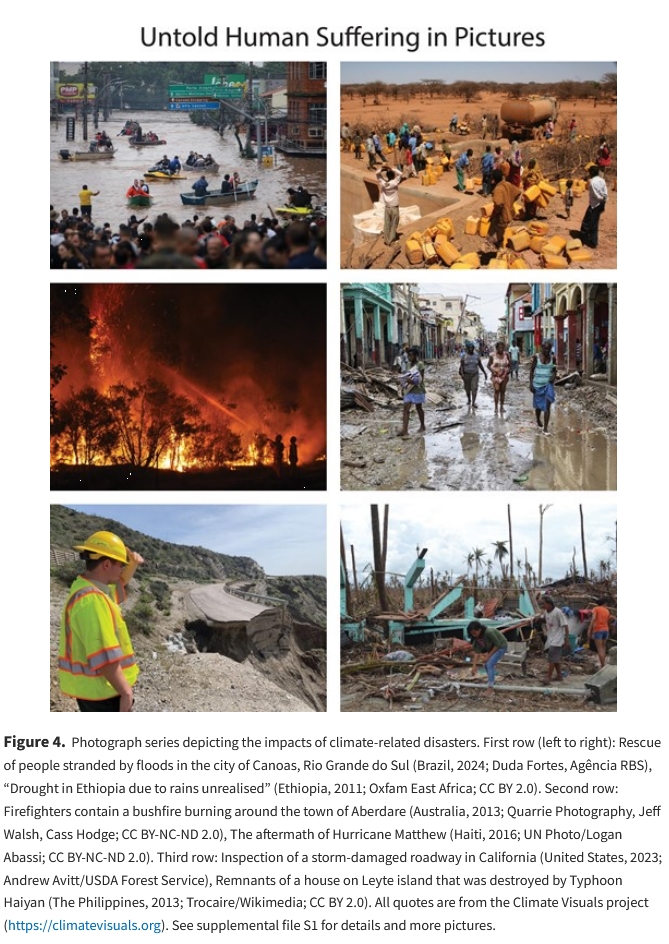|
|
||||
 Image by GrumpyBeere from Pixabay By Jo Nova Maybe it’s lucky Australia didn’t have to fight a war when Chris Barrie was the Australian Defence Force Chief.Admiral Barrie says “ security threats from climate change dwarfed those posed by China”. Apparently the land of drought, fire and flood is will be overwhelmed with a one millimeter annual sea level rise. The things that really scare him are not the subs, drones, propaganda programs, embedded spies or hypersonic missiles, what really freaks him out is a half a degree of warming. So, five or six retired defence types are calling for an “emergency mobilization” and another government bureaucracy — a dedicated office of Climate Threat Intelligence — which if it was intelligent would do what no government has ever done, and audit the UN climate models. They’d discover the models fail on humidity, drought, rain, clouds, the upper troposphere, the Antarctic, the sea ice, the short term, the long term, ocean currents, and practically everything else. They also want some kind of “early warning system” — in case the cyclones develop Stealth mode perhaps? You never know when a tropical storm will sneak up on you. Especially if a hostile government wiped out your satellites, or crashed your grid with booby trapped chips in solar panels, or paralyzed a city with an EV update. Australian Security Leaders Climate Group calls for overhaul of federal government’s climate threat preparedness strategy
A group of former national security leaders says the federal government needs to radically overhaul the way it plans for climate threats, warning that Australia is totally unprepared to deal with the cascading and existential risks that climate change presents to the region and the world. The starkly worded new report by Australian Security Leaders Climate Group (ASLCG) — which includes former Australian Defence Force chief Chris Barrie — says that climate change presents such a serious security threat that it demands an “emergency mobilisation” in response. “Today, unimaginable new climate extremes confront us: record-breaking droughts and floods, cruel heatwaves, unstoppable bushfires, broken infrastructure, and coastal inundation. Worse is to come,” it says. Win wars with wind turbines! The ASLCG says the federal government must make sharper and faster cuts to emissions, as well as pressing the largest polluters to collaborate on driving down carbon pollution. The answer to everything is solar panels, for sure. They’re also calling on the government to establish a new climate threat intelligence branch and early warning system to assess the impacts with “brutal honesty,” while improving planning for the disruptions climate change will bring. Lord help us, if our military bases can’t handle a drought-surprise in a continent of deserts, or a flood in a land of monsoonal rains, we are already in trouble. Admiral Barrie said that the latest climate science showed that large parts of northern Australia “could become uninhabitable within 30-40 years, threatening military bases, communities, and the economy. Hypothetically President Xi would be happy about statements like this: “All the billions of resources being put into confronting China will not help one iota in dealing with the greatest threat to our future security in Australia and the region — and that is climate disruption.” If the CCP had funded a group which aimed to reduce Australian industrial competitiveness, our defence capability and also raise electricity prices, it might make similar arguments to ASLCG. Just sayin’…
By Jo Nova Government funded science is not so much a search for truth as new chapter in the Communist ManifestoIt’s a form of cultural warfare. These funds are not just diluting science, but actively sabotaging it. They enable experts who “decolonize geoscience” and offer a million dollars to the kind of people who say “white supremacy permeates … STEM education”. It is the antithesis of the dispassionate observer, instead the observer is all that matters. If you can’t see your oppression, it’s because they didn’t give you enough money… Two billion dollars buys a lot of loud shouty voices, amplifying their messages through impressionable teenagers. These pseudo experts don’t just waste offices, they get invited to sit on committees, they raise PhD students, and their words can be used in legal cases and “fact checking” situations. Not to mention, their output trains AI engines too. It legitimizes a whole twisted way of thinking. Under the Biden-Harris government The US National Science Foundation is gradually being converted to a Neo-Marxist PR machine. A US Senate Committee Report shows that in the first quarter of 2024 more than a quarter of all new NSF grants were written in far left class-war regalia. “Committee analysis found 3,483 grants, more than ten percent of all NSF grants and totaling over $2.05 billion in federal dollars, went to questionable projects that promoted diversity, equity, and inclusion (DEI) tenets or pushed onto science neo-Marxist perspectives about enduring class struggle. Redirecting funding to these subjective, ideologically based projects was deliberate. Beginning in 2021, the White House and NSF created scientific integrity policies to require that agencies “[i]ncorporate [Diversity, Equity, Inclusion, and Accessibility] considerations into all aspects of science planning, execution, and communication.”4″ The NSF was already captured by Big Government years ago, this reformation takes it to a new level of cultural warfare: Americans are losing confidence in science, but perhaps that’s the point? American confidence in the scientific community has declined significantly since the COVID-19 pandemic. Over a quarter of the American public now reports that they have “no confidence” or “not too much confidence” in scientists; just 12% held those views when the pandemic began. Far fewer Americans believe that science produces a “positive effect on our society,” too. In 2019, almost three out of four Americans felt science had a positive effect. As of fall 2023, that number stands at 57%. Geoscience got “decolonized” which probably didn’t help find the lithium The Biden-Harris NSF has responded by sending over $2 billion to projects geared towards advancing divisive social ideologies rather than investigating hard science. In 2022, NSF gave Columbia University $4.4 million for its Implementing Novel Solutions for Promoting Cultural Change in Geoscience Research & Education (INSPIRE) program to “decolonize geoscience.” The following year, NSF awarded $5 million to Arizona State University and two other schools to build “an intersectional learning ecosystem toward gendered racial equity in artificial intelligence education.” It’s straight out of the Communist Manifesto: American university campuses have become saturated with DEI initiatives and courses that use neo-Marxist theories to code individuals as members of an “oppressed” or “oppressor” class based on the color of their skin, heritage, or political perspectives. In Marxist theory, the “oppressor” is typically the class or group that holds economic, political, and social power over others, while the “oppressed” are defined as those who must support the oppressors—through their labor or service—to survive. In his Communist Manifesto, Karl Marx called for the dismantling of the current capitalist order through a revolutionary process. He later wrote “revolutionary terror” was needed to bring about a “new society” that would allow the oppressed class to rule. The Committee found instances where principle investigators who were DEI funded ended up leading protests on campus in support of terrorist groups like Hamas. One, Shirin Vossough, was known to say ““the ideology of white supremacy permeates all of the nation’s institutions, including our existing system of STEM education”. After that, she got a million dollars: Shirin Vossoughi is an associate professor of learning sciences at Northwestern University and the co-principal investigator for a $1,034,751 NSF grant awarded in 2023 for a project titled, “Reimagining Educator Learning Pathways Through Storywork for Racial Equity in STEM.” Vossoughi credits Marxist traditions for her decision to teach children “the meaning of ‘genocide’ and ‘apartheid’” after Hamas’s attack against Israel. If you wanted to stir up trouble on campuses, just fund the right professors eh? It’s not that girls (whatever they are) need help with science, it’s that science is designed to exclude women:Thus and verily “science” must be changed to be more girly creative, and less mathematical and unemotional… Many of the 1,058 grants that fell into the Gender category funded research that investigated the supposed harms of “mislabeling” individuals or using the wrong pronoun to refer to a person. Projects also went beyond programming that might provide more opportunities for girls and women in science; they presumed that scientific disciplines are purposely constructed to exclude them. And if the science that made our civilization possible is too white, then we must devolve that thinking, we wouldn’t want to be racist, would we? As described above, grants in the Status category—3,160 awards—received funds for research related to race, ethnicity, or social groups in ways that presumed the sciences were inherently biased against certain communities. If an enemy wanted to destroy the things that made the West great, the plan to dismantle science would probably look a lot like this. Thanks to Judith Curry on X for sharing.
By Jo NovaBanker warfare to destroy businesses but make the weather nicer…It’s another emergency on the Australian Soviet-style electricity grid. An entirely profitable and law abiding operation is potentially about to be shut down, putting 4% of the national electricity supply at risk, because the bankers want to save the world, and the government is helping them. Who runs the country, is it the PM or the banker cartel? Delta Electricity needs a bank guarantee so it can keep trading in our national electricity market, but 15 banks have refused to supply that because of their own show-pony ESG requirements, designed to impress their ski buddies at Davos. Essentially, the bankers want to decarbonize our electricity grid, and make electricity more expensive for the poor, but can’t be bothered to run for election, so they are running the country the way they want anyhow — voters be damned. It’s even more absurd that it looks, Delta isn’t asking for a loan — it’s profitable, it has the cash. But the bankers won’t even hold the cash and promise to pay it back when needed. Delta’s current bank guarantee runs out on Dec 31, and after that it won’t be legally able to supply electricity unless the bureaucrats change the rules. So Delta has issued an urgent request for a rule change to add the words “or cash” to the current market rules. Anthony Albanese could solve this in five minutes. Apart from the banal rule change, all these banks are only allowed to trade in Australia with government approval, and their role is to serve the people, not to control the weather, or run political agendas. All the PM has to do is threaten to revoke their licenses or issue a new license to a competitor that will serve fossil fuel entities. He could also pull government contracts and pension accounts from bankers who boycott legal Australian entities for political reasons. (See how Ron de Santis did that in the US). The US Republican States have already solved this to some extent. One of Australia’s oldest coal generators refused bank guarantees, operating status under threatDelta Electricity, which operates the Vales Point coal-fired power station in New South Wales, has requested an urgent rule change from the Australian Energy Market Commission after 15 banks refused to offer it credit on emissions grounds. Chief executive Richard Wrightson said he had even offered to deposit money with an institution as security, simply to procure the financial instrument necessary under the rules, but even that offer was refused. “We’re actually not asking them to lend, we’re just asking them to issue a bank guarantee,’’ Mr Wrightson said. “This de-banking is dangerous … I won’t describe it as a crisis now, but unless we prepare for this, it’s chaotic.’’ Delta Electricity runs the Vales Point coal fired station in New South Wales. It has a capacity of 1320MW, and was marked for closure in 2029, but the Czech group that owns it said it should run at least another 4 years. The poor sods. What foreign company would want to invest in Australia any more with a rabid government that allows the banking mafia to run the electricity grid and to bankrupt legal entities on a whim? What looks, acts and smells like a banker cartel?What are the odds in a free market that 15 out of 15 banks decided to adopt the same “anti fossil fuel” boycott program at the same time? All of them are saying “No thanks” to the profits from arrangements with thermal coal. Speaking of which, why aren’t all the other private coal plants struggling? The plants owned by Alinta and EnergyAustralia are Chinese State assets, so President Xi is happy to help. But AGL and Origin Energy own coal plants and they aren’t begging for a rule change. Do they get a free pass from the bankers because they also own unreliable generators too? Is that how this works — to squeeze out the only independent coal plant with no vested interest in sabotaging coal power? The octopus grip of the big bankers spreads. All the Australian “Big Four” bankers signed the GFANZ banker cartel agreement — ANZ, CommBank, Westpac, NAB, plus Macquarie Bank, and Bank of Queensland. They serve the globalist UN, or their BlackRock and Vanguard masters, not the Australian people. All banks depend on government protection for their ability to create legal currency out of thin air. If you or I loaned money we didn’t have, it would be called counterfeiting. The money-printers have more control over our national grid than our PM seemingly has. h/t Bally, RickWill,
With four weeks to go ’til D-Day for the parasitic blob (the US Election), the headlines today are biblical hellfire with photos. Earth’s vital signs have hit record extremes they tell us. In all the years we’ve been recording things, which is practically nothing, storms, floods, droughts and the mental health of jellyfish have never been worse, which is obviously why food crops are higher than ever before, the Earth is greening and more humans are alive than have ever existed. Like soothsayers with chicken entrails, captive scientists are squawking disaster like their funding depends on it: Earth’s ‘vital signs’ show humanity’s future in balance, say climate expertsby Damien Carrington, The Guardian “We’re already in the midst of abrupt climate upheaval, which jeopardises life on Earth like nothing humans have ever seen,” said Prof William Ripple, of Oregon State University (OSU), who co-led the group. “Ecological overshoot – taking more than the Earth can safely give – has pushed the planet into climatic conditions more threatening than anything witnessed even by our prehistoric relatives. It’s “like nothing humans have ever seen” says Prof Ripple, who has forgotten the Eemian, the ice ages, the Toba supervolcano, countless asteroids, and the Black Plague. We’re panicking about a couple of degrees of warming, but cavemen had it hotter and colder, and for 150,000 years their air conditioners didn’t work. It’s like the modern “scientists” are trying to erase all of prehistoryWhat we’re dealing with is nothing like what humans have already suffered through. Humans saw the seas rise by 125 meters (twice) — children used to play on the continental shelf until all their beaches disappeared, their homes washed away, and their favourite reefs were destroyed. Humans saw ice caps a mile thick roll over Manhattan and humans saw the wall of ice melt away too. Things were so bad, at some point humans waved good-bye to an entire species of hominid which had brains bigger than our own, and the vast forests of the Sahara desert turned to dust, the fish died, the rivers stopped flowing and the communities that existed for thousands of years were wiped out. Nothing we’re dealing with today is remotely as bad as what humans have already dealt with. Every kind of disaster will hit “Billions of people”:The hyperbole knows no bounds. The “millions of climate refugees” that didn’t happen, are now “billions”. No disaster is off limits to the Scare-fairies: “Climate change has already displaced millions of people, with the potential to displace hundreds of millions or even billions. That would likely lead to greater geopolitical instability, possibly even partial societal collapse.” Every bad thing under the sun is caused by climate change. That’s how we know it isn’t science. The climate is doing just fine, but the The State of Climate Science is a tragedy.
REFERENCE (if you can call it that) William Ripple, et al including Michael Mann and Naoimi Oreskes (2024) The 2024 state of the climate report: Perilous times on planet Earth, BioScience, biae087, https://doi.org/10.1093/biosci/biae087
By Jo Nova Thanks to Paul Homewood at NotAlotofPeopleKnowThat for finding this gem of a video. Commiserations to friends in the UK, where Ed Miliband, or worse, his new National Electricity System Operator (NESO) think that flywheels will save money because the UK won’t need to maintain back up power stations and import so much electricity. Ed Miliband is the Minister for Energy Security and Net Zero, which is a bit like being the Minister for War and Peace at the same time, or perhaps more like Health and Ebola. His big new plan is to set up a big new bureaucracy (NESO) and their big idea is to stop blackouts by installing giant flywheels around the country. Flywheels are good at smoothing out the frequency glitches, but the second largest flywheel operation in the world would only power the UK for a fraction of a second. It’s going to take a lot of flywheels, or as David Evans dryly remarked, if they can speed up the flywheels it might work, but to put enough energy in, they may need to get close to the speed of light. Ed Miliband reveals plan to prevent net zero blackoutsby Johnathon Leake, The Telegraph Giant flywheels are to be installed around the UK to minimise the risk of blackouts as the power system goes carbon-free. Flywheels are energy storage systems that use surplus electricity to accelerate a massive metal “wheel”… NESO said the schemes would save consumers money by cutting the need for maintaining backup power stations and importing power from overseas via interconnectors. A spokesman said: “The pathfinders alone are expected to provide consumers with savings of £14.9bn between 2025 and 2035.” As Paul Burgess explains, the flywheel sales team often talk in megawatts but rarely mention megawatt-hours (probably because they are embarrassed). The worlds second largest flywheel system has 200 carbon fibre flywheels spinning in a vacuum chamber and provides 20 megawatts. But it can only supply 1 megawatt for 15 minutes, which is a quarter of a MWh, which is a problem because the UK uses about 860,000 MWh every day. Paul Burgess estimates the second largest flywheel installation in the world can power the UK for about one 200th of a second. A flywheel is like a coal generator the second after it runs out of coal. Then there’s “The Cost”Burgess points at a study by Dongxu et al that reviews the costs of supplying energy via flywheels, and its in the ballpark of $1,000 to $5,000 per kilowatt hour. (That’s a million dollars a megawatt hour). It’s 1,200 to 4,600 times as expensive as gas in the UK, and about 100,000 times as expensive as Australian brown coal power. It’s cheaper to cook food over a pile of burning money. …the capital cost per unit power of a FESS [Flywheel Energy Storage System] with a rated power of 250 kW and a maximum expected storage time of 15 min is 250 to 350$/kW, and the corresponding unit energy cost is 1000 to 5000$/kWh. The International Renewable Energy Agency estimates that the unit energy installation cost of FESS will decrease by 35 % by 2030, from the current estimate of 1500–6000$/kWh to 1000–3900$/kWh [14]. — Dongxu et al. Yet NESO says it will “save consumers money”. Aren’t there laws about fraud or dishonest advertising that apply to statements like these? Then there’s “industrial accidents”The same paper mentions that things can get fairly hairy with heavy objects moving at high speeds: In order to fully utilize material strength to achieve higher energy storage density, rotors are increasingly operating at extremely high tip speeds. However, this trend will lead to severe centripetal stress and potential safety threats caused by rotor failure. In 2011, two carbon fiber composite rotors weighing 1 ton and storing about 30 kWh failed and began to disintegrate. Flywheels are also known as “Synchronous Condensers” though coal, hydro, nuclear and gas plants effectively have free flywheels built into the system. The only reason to add flywheels to the grid today is to allow the wind and solar generators to run without crashing the system. It’s yet another subsidy for wind and solar generators, and the costs should be laid at their feet. The real issue here is that the people running the country are innumerate simpletons, and the professors who know that are too afraid to say anything lest they lose their next grant, or fall off the Honours list, and the journalists are too indoctrinated, and the editors too captured for the bad news to make it to the front page. REFERENCEDongxu et al (2023) A review of flywheel energy storage rotor materials and structures, Journal of Energy Storage, Volume 74, Part A, 25 December 2023, 109076.
UPDATE Friday: –– For readers in darkness, there is currently a G4 geomagnetic storm. Satellites at L1 suggest a spike in density (SWEPAM) coming through in minutes (5.30pm WST 8.30pm EDT). See Glendale for live reports of where the action is. Graphs and discussion at SpaceWeatherlive. Nullschool-Space (a very low resolution, generic estimate) is as colorful as it gets. This post is temporarily bumped. Keep reading → ***UPDATE: the X9 has finally arrived (Monday afternoon and evening) and is triggering auroras (briefly) as far south as Cape Cod in Florida. Keep your eyes out…. By Jo Nova Two X-class flares in two days, X7.1 and now X9I put in an order for an x class flare while I’m away from city lights. I was delighted when a big X7.1 was launched on cue a couple of days ago. It was the second biggest flare this cycle until a few minutes ago when a huge X9.05 occurred. This is now the largest solar flare in Cycle 25, bigger than the flare in May this year which caused all the auroras around the world this year in places like Florida and southern Queensland. That was an X8.7. The X7.1 flare may bring auroras Friday or Saturday which was exciting enough. The scale is logarithmic, so this latest one is effectively 100 times larger. Few details are available yet on the latest flare. The same sunspot (AR 3842) caused both x-class flares this week, and it is near the centre of the side facing us. It does appear to be Earth directed, but as with all things aurora — we won’t know for sure until it happens (or it doesn’t). Space agencies will make guesses about when these will arrive but they may turn up 8 hours early or late, and the direction of the interplanetary magnetic field needs to be “negative” for good auroras. People who want to see an aurora are best signing up for an email or SMS notification (EG Glendale App). We won’t know exactly when the best action will be until the charged particles from the Coronal Mass Ejection hit the satellites at the Lagrange point. These sit about a million miles away from Earth. When (if) that happens, aurora-hunters will have only 30 minutes to an hour to get to a dark spot. And of course, the best laid plans may be wrecked by clouds or dawn.
RESOURCES
UPDATE: The AuroraGuy has a good description here. Find a place with a dark sky to watch from. He suggests the Bortle Scale 1-5 which are country or rural sites. The darkest sites are class 1 and the brightest city is class 9.
Sorry. I’m away from the desk for a couple of days… By Jo Nova All those sustainable dreams, gone pfftGoogle, Oracle, Microsoft were all raving fans of renewable energy, but all of them have given up trying to reach “net zero” with wind and solar power. In the rush to feed the baby AI gargoyle, instead of lining the streets with wind turbines and battery packs, they’re all suddenly buying, building and talking about nuclear power. For some reason, when running $100 billion dollar data centres, no one seems to want to use random electricity and turn them on and off when the wind stops. Probably because without electricity AI is a dumb rock. In a sense, AI is a form of energy. The guy with the biggest gigawatts has a head start, and the guy with unreliable generators isn’t in the race. It’s all turned on a dime. It was only in May that Microsoft was making the “biggest ever renewable energy agreement” in order to power AI and be carbon neutral. Ten minutes later and it’s resurrecting the old Three Mile Island nuclear plant. Lucky Americans don’t blow up their old power plants. Oracle is building the world’s largest datacentre and wants to power it with three small modular reactors. Amazon Web Services has bought a data centre next to a nuclear plant, and is running job ads for a nuclear engineer. Recently, Alphabet CEO Sundar Pichai, spoke about small modular reactors. The chief of Open AI also happens to chair the boards of two nuclear start-ups. The AI Boom Is Raising Hopes of a Nuclear ComebackThe AI boom has left technology companies scrambling for low-carbon sources of energy to power their data centers. The International Energy Agency estimates that electricity demand from AI, data centers, and crypto could more than double by 2026. Even its lowball estimates say that the added demand will be equivalent to all the electricity used in Sweden or—in the high-usage case—Germany. Australia uses ten times as much electricity as Microsoft, but is still fantasizing about reaching 82% renewable by 2030 with no nuclear power “because it will cost too much and take too long”. Microsoft uses 24 TWh of energy a year and employs 220,000 people, and knows it needs a nuclear plant to be competitive (and reach, albeit frivolous weather changing ideals). Australia uses 274 TWh of electricity, and employs 14 million people but is going to aim for frivolous climate witchery anyway, and do it the double-hard way. Who needs to be competitive, right? Pierre Gosselin discusses how Germany risks being left behind because it has switched off all its nuclear plants. At least it has some power lines to France. Australia has no nukes, not much hydro, no mountains to spare, is the driest inhabited continent on Earth, and it has no powerlines to anywhere. We are the crash test dummy. Soon most big companies will have more reliable power than we do.
|
||||
|
Copyright © 2025 JoNova - All Rights Reserved |
||||




















Recent Comments